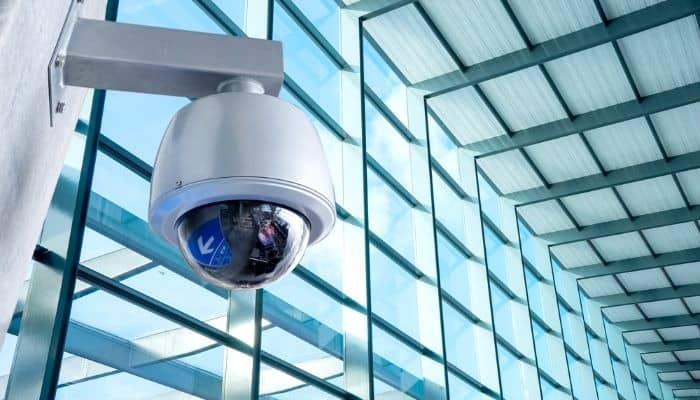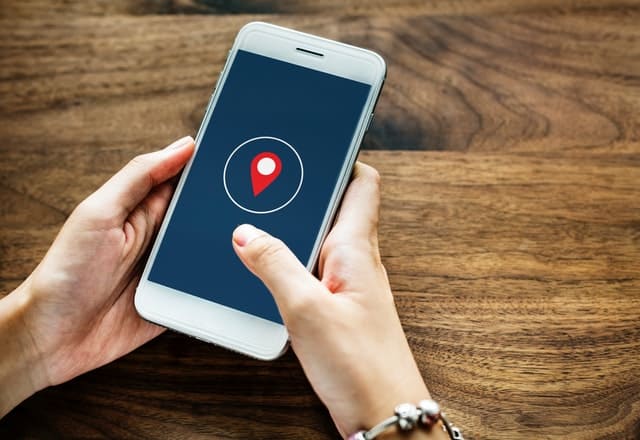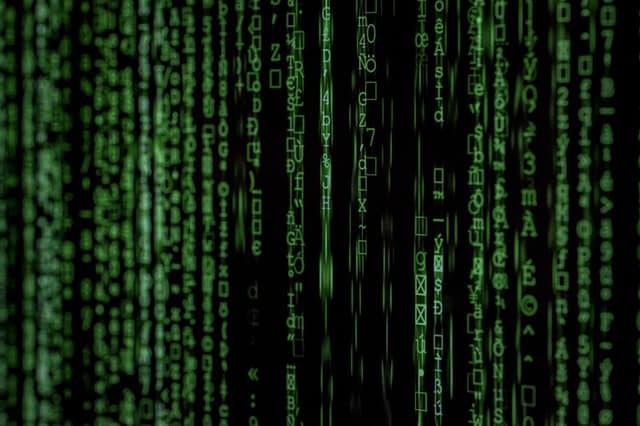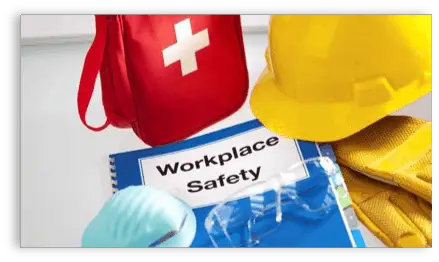Every company is responsible for creating and maintaining a safe environment for its employees. Not only does this apply to factories with dangerous machinery present, but to offices as well. There are numerous potential hazards such as falling, tripping, incorrect lifting, as well as potential threats from intruders, hackers, data breaches, etc.
Workplace Safety and Security best practices – Employers need to provide safe and secure working environment by using thorough security system including access control systems, CCTVs, keycards, clean workstation, and emergency exits, training the employees about security procedures, constant improvement of the system so it can’t be attacked by hackers, hiring private security, and more.
Having a workplace safety and security plan in place will show your employees that you as an employer care about their wellbeing. Employees will feel a lot safer and secure at work which will boost their productivity and will make them happier.
Don’t wait for some disaster to happen in order to take preventative measures.
The effective safety program will reduce the number of injured workers, decrease the number of sick days, lower the high insurance premiums, as well as avoiding the hassle of training new people to replace the absent ones.
A proper security system will protect your company and building against theft while protecting your employees from violence.
These programs should not be considered as a burden to the company’s operating, on the contrary, they will boost its efficiency. For example, issuing photo ID badges coded key cards for accessing the building can be pretty cost-effective. (We have written a related article – Efficient Workplace Security Devices )
)
Some of these practices will help you in protecting your company and everyone inside it.

Safety and Health Program
Every company needs to have a safety and health program. This program needs to be laid out clearly for all of the employees. OSHA (The United States Department of Labor’s Occupational Safety and Health Department) is providing recommended practices as a guide when creating a safety and health programs.
However, they are recommending that you don’t need to have a complete program, but instead have core elements that you will build upon later. All of the implemented health procedures should be part of the culture of your company.
Additionally, to prevent neck and back injuries, employees need to use ergonomically designed equipment.
1. Clean Workplace and Workstation
Having a clean and neat workplace as a safety precaution often is overlooked. By making sure that people clean their workstation and clean the equipment after using it, there are less chances of injuries or misplacing/stealing important documents.
Additionally, employees need to make sure that there is no clutter around the workplace or in front of the emergency exits. Clutter can be reason number one for tripping and falling. Another example is over-stacking loads on the storage racks, that are preventing the sprinkles to efficiently do their job in a case of emergency.
At the end of the workday, train your employees to make sure that all of the important documents and information aren’t left on desks, are filed in the appropriate cabinets, fax/printer trays are empty, as well as turning off the computers, locking up the file cabinets, erasing whiteboards, etc.
2. Electrical Extension Cords
Most of the electrical hazards in the workplace are due to the inappropriate use of electrical extension cords. The use of extension cords is to supply power temporarily for certain operations.
When these cords are used for extended periods of time, they can easily heat up the wires by overdrawing electricity from the circuits, which may result in a fire. Additionally, they pose a potential threat to tripping.
To prevent these potential hazards, there should be regular inspection either by the employees or electrical team if the extension cords are in good working condition, then which extension cord can be used for temporary uses (e.g. powering a fan on a hot day), whether the employees are using the right extension cord for the job (e.g to plug in several different devices) so it can take more power without getting hot, placing worn-out cords out of service, etc.
Most important, extension cords need to be gathered up and stored after their use. If the extension cords are being used for regular use, you may consider bringing the electrician team to drop a line and outlet.
3. Dangers of Not Lifting Properly
Another common cause of workplace injuries is the failed attempt to properly lift an item. Most of the experts’ advice on lifting with the legs and not with the back. However, most of the employees fail to implement this advice.
Create a culture where employees help each other in lifting heavy items. Being afraid to ask for a hand is the reason for the occurrence of these injuries.
4. Stress Management
When it comes to the health and safety of the employees, not only physical health matters. Emotional health is just as important. Workplace stress is caused by not taking proper breaks, long hours, unrealistic deadlines and targets, workplace conflicts, bullying, etc. All of these factors affect the emotional health of the employees, thus their productivity. (We have written a related article – 15 Emotional Signs of Stress in the Workplac e)
e)
By implementing a system for reporting work-related stress and encouraging the employees that reporting work-related stress should not be considered as a weakness, employers will be able to assess all of the situations and prevent burn-out among the employees. (25 Top Stress Relief Products )
)
There are five important components to take into account when creating a safety and health program:
a) Communicating system – Fluid communication is one of the most important aspects of having a successful safety and health plan. Having a simple communicating system, employees can share important information, alert others of potential hazards or report accidents and injuries in the office.
b) Specific programs for training and educating with the intention of training employees in handling dangerous materials, then certain legal requirements, as well as other important aspects of the safety and health program;
c) Regular inspections of the workplace to identify activities that might compromise the safety of the employees;
d) The exact plan for an emergency – in the event of foreseeable emergencies such as flooding or fires everyone should be well-informed through various staff meetings on how to act;
e) Continuous improvement of the program – management and staff meetings should address not only the current program but also what measures should be taken in order to improve the existing safety and health program.

Workplace Security Plan
Workplace security doesn’t refer only to the physical security of the employees, but also refers to cybersecurity – protecting important data, software, networks, as well as protecting assets and equipment. With technological advancements, more and more records of customer data are being hacked.
The security plan needs to be developed so it covers different departments. Every department faces its own challenges, thus it needs different safety procedures.
For example, in the event of workplace violence, the procedures for securing the workplace are very different procedures for locking-up the raw materials. Or the office has different safety and health challenges than the shop floor.
Every employee expects a safe and non-threatening environment in the workplace. Violence, threats or different unsafe working conditions will only lower the morale of the employees and their productivity.
You need to make sure that everyone is aware and takes the security plan seriously.
Creating the security plan starts with making the following 2 steps:
-
Risk assessment – In order to improve the security of your employees, you need to identify all of the factors that might compromise their safety. Here you can conduct a safety audit.
-
Create a list of potential threats – This list should have different sections such as emergencies- fire, flood, natural disaster or chemical leak, that require employee evacuation, then risks from criminal intruders including troubled current or former employee, customer, etc.
Also, you need to consider the potential threats for your field employees whose job is to go in high-crime areas or into clients’ homes.
A safety audit can incorporate the following questions:
Safety Audit Questions: In The Event of Emergencies:
| Do employees know who to contact in an emergency? |
| Do employees know where to go once evacuated? |
| Are employees trained on how to evacuate? |
| Are the escape routes known? |
| Are the exits free of obstacles and clearly marked? |
| Is there a use of hazardous materials? |
Prevent Intruders
Security Audit Question: Intruders Access
| How many building entrances are there? |
| How many office entrances are there? |
| Is the entrance to the office building clear? |
| Is the surrounding of your office building free of potential hiding places? |
| Is the entrance and car park well lit? |
| Is the parking lot secured by a guard or otherwise? |
| Do employees work late at night? |
We have written a related article – 50 Workplace Security Questions and Answers (Everyone is Asking) )
)
Prevention Strategies
The audit can help you in training your employees to be more aware of their security. So if the building has multiple points of entry, you can, for example, designate which doors should be used by the employees, as well as train them to notice suspicious activities.
The security systems need to be custom made according to the company’s safety needs. This way your business will be protected in the case of robbery, break-in, workplace violence, etc.
One of the best ways of creating and implementing a security program is to have an access control system in the workplace.
Additional parts of the security systems can be fire detection, sign-in sheets, panic buttons (placed throughout the workplace), 24/7 monitored video surveillance, quick alert to the Police, audio intrusion detection, and more.
An access control system is an electronic system that is regulating and restricting access to certain areas of the building including controlled exit from your building. This system can be operated with keycards, codes, voice or fingerprints.
This system is enhancing security and simplifying the overall process. For example, if someone loses their keycard or gets fired, you don’t need to replace the locks and worry about security breaches. Simply, you can revoke their keycard access. This is especially beneficial if there is a high rate of employee turnover at your workplace.
This system will allow you to have live information on the number of visitors and employees in the building. Also, you will know the time of everyone’s coming and leaving. All of this is preventing intruders to get in and reduces theft situations because you are able to see exactly who was present when certain things went missing.
Some of the more advanced access control systems can help you in reducing energy bills. If the system, for example, knows that certain building areas are not used can adjust the temperature and turn off some of the lights.
Usually, these systems are very easy to use and don’t require extensive training. Overall, this system is making sure that only authorized employees have access to the building and certain areas.

Elements of Access Control System
Gates and Building Doors – Make sure that the main gates to the office building are part of the access control system. By monitoring their opening and closing, the security check would start right before someone gets on the company’s premises.
To access the building’s door, employees can use their keycards, ID cards or biometric scans. Whereas the visitors will be given a card for the time they will be in the building and will be directed to certain entrance.
Regular checks of all entry and exit points
Open reception spaces, unsecured fire stairwells or broken elevators can give access to the potential intruders to get into your workplace. Make sure every vulnerable area is checked regularly so you can take certain measures to improve the security of those areas.
Video Surveillance
Unfortunately, having a perfect locking system is not enough sometimes. Installing security cameras provides an additional layer of security. Because usually, most of the breaches happen during regular working hours.
However, if you consider installing CCTVs, you need to check whether the local laws allow installing video surveillance in the company’s premises.
Cameras have most of their usefulness in lobbies, garages, loading bays, or other sensitive areas. Also if the company’s premises consist of several buildings, having cameras installed makes sense.
Usually, when people notice that there are security cameras, they are trying to be on their best behavior, since they are being watched. This will help you in deterring potential intruders and preventing thefts.
Video surveillance additionally is providing evidence for resolving certain disputes and you will be able to see what actually happened during certain incidents.
Good lighting
Good lighting doesn’t mean that needs to be part of an access control system. It can stand on its own but is better when it supplements the overall security system.
Video surveillance won’t do any good for you if it’s recording in the dark. Having good lighting installed can deter criminals as well as ensure that those who still try to break in to be fully visible.
Motion-activated lights have the utmost importance since they will be activated on the slightest movement, and all movements will be caught on camera, especially at night.
On the other side, good lighting in the workplace is allowing the employees to see clearly where they are going and with that is preventing slips, falls, trips, etc. Areas such as stairwells, storage rooms, warehouses, etc, need to be well-lit.
Overall, a well-lit area is providing the illusion of safety. Everyone will feel much safer in an area with good lighting.
Departments of Importance- access to the departments of HR and Accounting should be limited. Every employee or visitor needs to receive permission to receive access to these two departments. Why is that? Because these two departments have very important and critical data regarding employees, products, patents, etc.
Electrified locks- In the frame of the door can be installed different types of electrified locks such as electric strike, electrified hardware, electromagnetic lock, etc.
Contactless readers – As part of the access control system may be contactless smart cards and standard prox. This takes an easy installation process.
Biometrics – Biometrics are common part of security systems to access highly-secured areas of office buildings. Some of the common types of biometrics are retina, fingerprint, hand geometry, etc.

Office security measures
Almost everyone has been in a situation where some of the company’s equipment or personal belongings have gone missing. These situations are generating a negative atmosphere that later on is very counterproductive.
Some of the security measures that can be implemented are:
– Locking down the equipment in designated place;
– Locking all the paperwork that has sensitive information in specific filing cabinets;
– Designated lockers for personal belongings.
Also, keep reminding the employees not to leave valuable things in places that are easily accessible by other employees. Create a workplace culture where everyone checks the windows and doors when they are leaving late.
Server rooms and warehouse areas- Another important part of the company that needs to be a priority is network security. The physical access to the server rooms, data closets, as well as to the warehouses needs to be limited.
The network should be well-designed so it’s not easy to hack into. It is very important that your network is protected against different types of viruses and malware.
Additionally, the network should be used only for offices’ purposes and not be shared with people outside the office. The way of exchanging data between your employees and clients should be well known, as well as which data can be shared. All sensitive data needs to be encrypted before sharing it with third parties.

Cybersecurity and Information Security
Almost every part of working has switched to digital, which means that having proper cybersecurity is of utmost importance. Most of the companies consider their data as the biggest value in the company.
You must ensure that all of the sensitive data is protected and encrypted. Under sensitive information are considered customers’ lists, their credit history, social security numbers, then patents, unique product designs, financial records, and more information that need to be protected.
A cyber attack on this data might result in financial losses, identity theft, confidential information leaks, and more.
Possible risks
When creating the information security program, the first thing that needs to be done is to assess the risks that the company may encounter, and developing measures to prevent those risks.
- – Physical loss of data due to power loss, fire or flooding;
- – Unauthorized access to data – Unauthorized attack can be from a hacker attack or inside threat. In the first case you must protect your data from malware infection by using strong passwords for example. Whereas in the second case, as mentioned before you need to limit the access;
- – Data corruption – With the use of keyloggers or Trojan horses the data can be modified.
- – Intercepting data while in transit – data is stolen in the process of transmitting between the company and its employees.
Aspects of Information Security
Every company is different which means that the information security in the workplace will depend on the type of activities, the size of the company, budget, etc. However companies differ between them, there are a few aspects that need to be considered.
Security awareness – All of the employees must be aware of the security policies and procedures in the workplace, as well as be aware of their responsibility for maintaining a secure and safe workplace;
Response to incidents – there should be set certain steps that will be taken in the event of data loss or data breach;
Back-up data – Keep several copies of your important files on different platforms.
Train your employees
No matter how good is your security program if your employees are not well-informed, prepared, and trained. The training should start during the on-boarding process, where employees despite learning about their tasks, will learn the safety protocol and security procedures and will receive education materials all the time.
Having properly trained employees will minimize the number of accidents, as well as they will be prepared in case some emergency or incident does happen.
Make sure to involve your employees in the process of creating an effective security program. This way, they will feel a sense of responsibility regarding safety and security and will most certainly promote a culture of safety in the workplace.
Having regular meetings with the employees will help you in gathering feedback from them if they have any safety concerns and how to make their working environment a lot safer. Ask them to help you in identifying possible defects in the office equipment so there can be avoided potential injuries.
In case your employees don’t want to speak about their concerns in public, you need to provide a way for them to inform you about their concerns anonymously.
Normally, the face-to-face meetings are the most effective way of sharing information and making sure that your message is heard. But, still, it would be a great idea after the meeting to create a reference manual from the gathered information.
Even though all of the equipment comes with safety manuals, the training program should cover everything from the use of the office equipment, locking the office, use of PPE, to security protocols in the event of intruders, data breach, etc.
Never assume that all of the employees in the workplace are well aware of the security and emergency protocols. There can be employees who for various reasons missed the regular training.
There are a few basic areas that need to be included in the training program:
10 Security Awareness Areas to Train Employees
| 1. The procedure when opening and closing the office |
| 2. Reporting any suspicious activity or asking strangers “May I help you” in the office |
| 3. How to respond to violent threats |
| 4. Following the procedures when taking some of the sensitive work home |
| 5. Knowledge of the evacuation routes, fire procedures, etc |
| 6. Steps that need to be taken in case of emergency or natural disaster |
| 7. Use of first-aid kits (first aid kits should be placed in easy-accessible place) |
| 8. Clear display of emergency telephone numbers |
| 9. Emergency phones that are placed in storage rooms or other isolated areas |
| 10. Making sure that the working station is clean at the end of the workday |
Do you need to hire Private Security?
To answer this question you need to answer several other questions and make assessments based on those answers, such as are your employees at risk of some type of violence? Are they handling cash or some other valuables? How often certain employees work at night? Are there any layoffs recently? Are your customers angry about waiting in a long line?
However, a security guard won’t be of much help if your employees are most of the time on the road, or are utility workers, etc.
Pros
Employees’ perception – Employees might feel a lot safer and secure if they know that a professional security guard is patrolling the premises;
Intimidation – Professional security guard is well-trained and can deter any violent individual from even entering the office building, and prevent any violent incidents or theft;
Inspection – Guards can make a thorough inspection and help you eliminate all potential breaches in security;
Customers/Client perception – Some of your visitors, clients, or customers might feel protected when security guard greets them wat the door, but some may feel a bit uneasy.
Cons
Cost – Private security surely costs a lot more than some less expensive safety measures like issuing keycards for access, or training your employees to be vigilant;
Complacency – By hiring a security guard, most likely everyone in the workplace will lower their guard. The chances of taking risks that might jeopardize security will be higher.
Additionally, you need to make a few other things, before hiring private security:
Gather information and crime statistics for your area are from your local police department. Then ask other employees in your area, if they’ve hired private security, and what are their experiences. Interview several security companies so you can compare the cost and the services they offer. Lastly, check with your insurer if hiring private security, or taking some other security measures will lower your premiums.
Benefits of Having a Security Awareness Program
Lower rates of turnover – If the area where the office building is located is not very secure, employees will feel insecure. Having a proper security system in the workplace will help in avoiding regular absentees and high rates of turnover.
Happier employees – The workplace is a much happier place when employees and sensitive data are secured. A healthier working environment increases communication between employees and creates a better culture and maintaining a clean and neat environment.
Lower insurance premiums and fewer insurance claims- Having insurance is just as important as having an effective security system. The security system will help you to take all precautionary measures to protect your employees and sensitive data. But you should do regular check-ups to test your security system. From time to time your team needs to improve the security system so it’s harder for hackers to break in the system. All of this will help you in lowering your insurance premiums as well as having fewer insurance claims.
The most valuable asset to the company – employees are secured and protected;
Retaining clients – Clients will be ensured that their valuable information and projects won’t be compromised;
Reducing costs – If the company has a strong security system, will be less likely to lose money due to cyber attacks or break-in.
(We have written a related article – Everything You Need To Know in Implementing Workplace Security Awareness Policy )
)
Related Questions:
Is the use of smartphones in the workplace considered a safety threat? The use of a smartphone is considered the biggest distraction in the workplace and one of the leading causes of injuries. Additional distraction is considered wearing headphones and listening to music.
You can’t eliminate these workplace distractions but you can minimize them by implementing certain policies on the use of mobile phones. The same applies to listening music. Listening to music should not block all the sounds that are happening in the workplace.
When employees focus on their job without being distracted by their phones, the workplace can be a lot safer.
Staying hydrated for a safer workplace? Dehydration leads to lower productivity, improperly handling equipment, and more. Dehydrated employees are prone to several physical issues, such as dizziness, fatigue, weakness, slower reaction times and confusion. All of this can lead to heatstroke or serious cardiac complications.
Dehydrated employees are not only danger to themselves but also to everyone around them.
It is very important, employers to encourage employees to take several breaks to rehydrate throughout the working hours. This also includes access to water bottles or fresh drinking water, especially on hot summer days.


